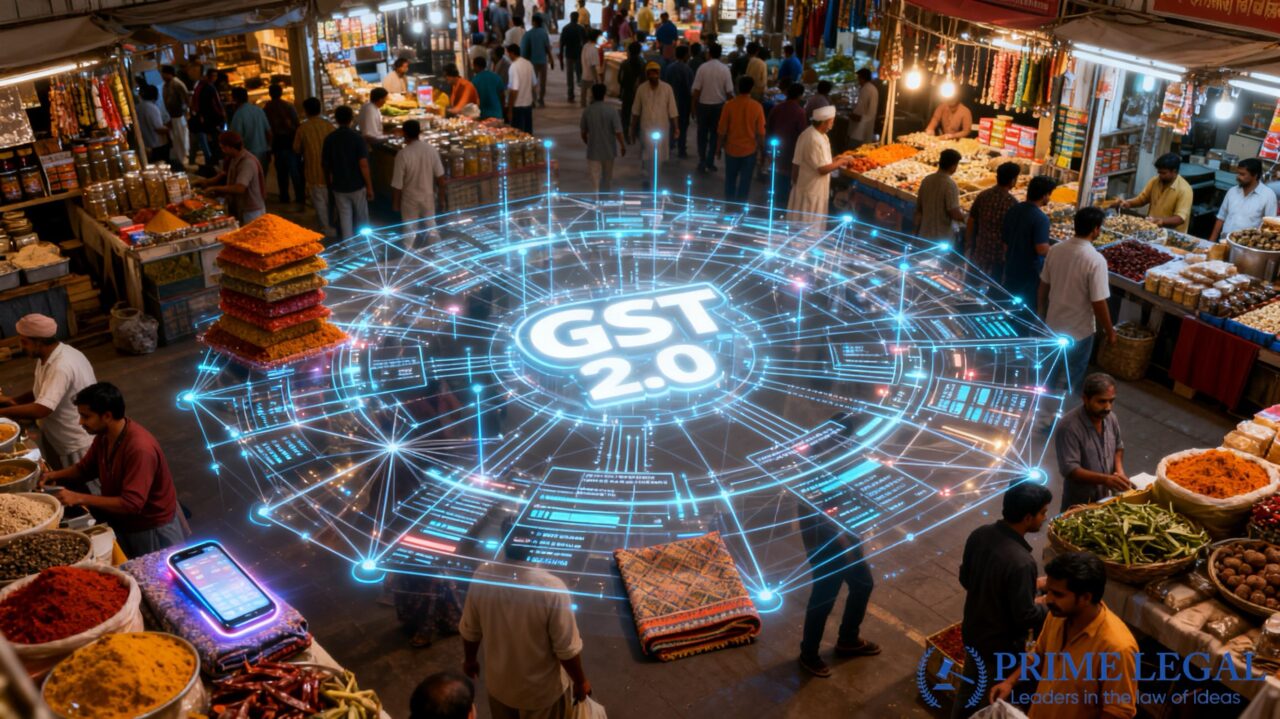INTRODUCTION
On September 22, 2025, India embarked on a change in indirect taxation with the official rollout of GST 2.0. The promise of this reform is that it will introduce significant changes to the way goods and services are taxed, which will eventually simplify compliance, address anomalies, and ultimately reduce effective tax burdens for end consumers on a large number of goods and services. Indeed, media reports suggested a broad range of goods and services would become cheaper with the new rate schedules.
BACKGROUND
The initial GST (Goods and Services Tax) system, which started in 2017, replaced various indirect taxes, such as the central excise, service tax, state VAT, etc., and often was under heavy criticism for its complexity, incorrect classification, cascading taxation, and time-consuming reimbursement of credits. In the interim, stakeholders, including industry bodies, departments of states, and consumer rights organizations, have repeatedly sought reform to alleviate structural problems.
Between 2023-2025, consultations took place among the Union Government, state governments, the GST Council, economists, tax professionals, and representatives from trade associations. These consultations were intended to balance the desire for simplicity of administration, with revenue adequacy and customer protection. A legislative basis for GST (Goods and Services Tax) 2.0 was set out through the Finance (Amendment) Act 2025, and then the new rates and mechanisms followed.
KEY POINTS
1. Revised Tax System
Under GST 2.0, the tax system has been restructured, with some reports indicating that various goods and services, particularly essential and consumer goods, will move to lower tax rates than previously in place, and therefore be cheaper for consumers. The revised slabs hope to create better alignment and less exceptions. (In The Hindu report on the launch, there were live updates on increasing the number of goods and services becoming less expensive under the new tax rates).
2. Goods & Services That Will Cost Less
The reporting has suggested that a number of everyday items, including consumer durables and some services, will cost less because of lower GST incidence or an option to eliminate constructed taxes. This is one of the major selling points of the change. (Inspired by “New GST Rates: goods and services costing less – live updates” as the subject header in The Hindu).
3. Smooth Input Tax Credit and Invoice Matching
An important feature of GST 2.0 is the real-time invoice matching. Businesses will have their input tax credits simultaneously validated if they file matching invoices properly online, thus reducing disputes and expensive false claims. This technology change is expected to clean out any leaky, unaccounted, tax expenditures from the system.
- Digital Compliance and the Technological Backbone
The new GST portal includes AI, predictive checks, and the use of blockchain elements to support data integrity. The system will produce pre-filled returns, flag inconsistencies, and have a “lite compliance” mode to lessen compliance burdens for small taxpayers.
5. Transitional and Compensation
In order to ease the transition for states and taxpayers, a States Revenue Stabilization Fund is established, and transitional credits are grandfathered in specific situations. States that may lose revenue during the transition will be compensated for a limited timeframe.
6. Consumer Redressal and Dispute Resolution
A recommendation is made for the establishment of a Consumer GST Arbitration Cell at the department level as part of an appellate system. Cases regarding misclassification, overcharging, or issues with refunds will have a continued fast-tracking process. The National GST Settlement Commission will resolve systemic disputes.
RECENT DEVELOPMENTS
Updated GST Rates: goods & services cheaper emphasizes consumer anticipation with live updates of rate modifications, indicating significant public enthusiasm for the change. During its 58th meeting, the GST Council met for further deliberations. Union ministers and state finance ministers reached agreement on final schedules and a timeline for implementation., and on guidance for the automotive, telecom, and consumer goods sectors. Some business groups offered cautious optimism, depending on further operational readiness, and trade associations stressed they need to provide clarity in their proposed classification rules. Legal academics will be watching how courts interpret outlier cases, such as circumstances involving hybrid goods or mixed supplies, under the GST 2.0 framework.
CONCLUSION
The onset of GST 2.0 represents an important milestone in the evolution of the tax system in India. The intention is for consumer welfare to improve and for revenue streams to be stronger due to lowering rates on several products, improved tax credit streams, and compliance using technology.
Debates will unfold around the next phase of GST, however, the success of GST 2.0, more than ever, will depend upon compliance ease, revenue stability, and, ultimately, welfare or benefits to consumers. Clarity in rules for businesses, defined dispute resolution mechanisms, and cooperation of states will all be essential to realize a much simpler, fairer and simpler model of GST.
“PRIME LEGAL is a full-service law firm that has won a National Award and has more
than 20 years of experience in an array of sectors and practice areas. Prime legal falls into the category of best law firm, best lawyer, best family lawyer, best divorce lawyer, best divorce law firm, best criminal lawyer, best criminal law firm, best consumer lawyer, best civil lawyer.”
Written by- Anwesha Anant


